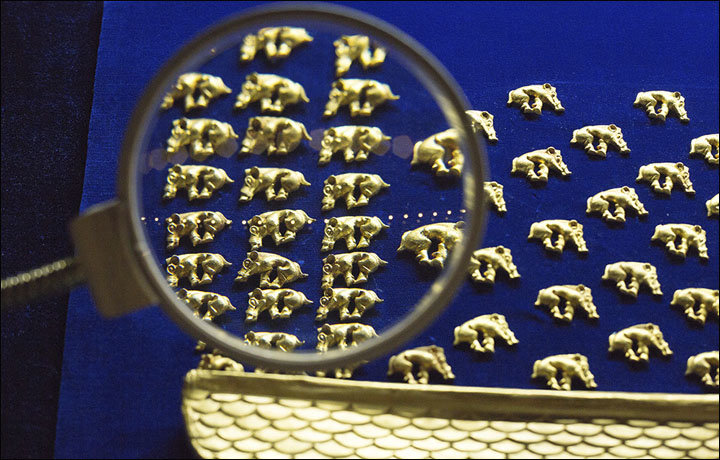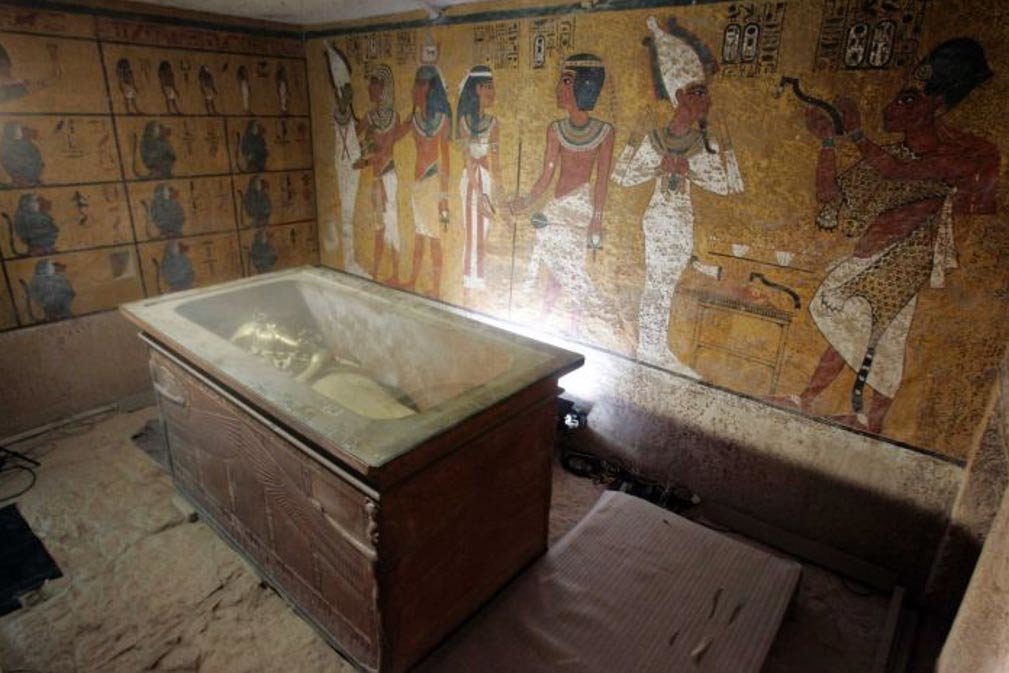
© Vera SalnitskayaIn all, some 9,300 decorative gold pieces were found here, not including the 'uncountable golden beads'.
Pictured: the gleaming riches no-one was meant to see belonging to an ancient nomad potentate, and his queen...or was she his concubine?
The royal tomb known as Arzhan 2 in the modern-day Republic of Tuva - to many, the most mysterious region in all Russia - is some 2,600 years old but its valuables match any trove from any era anywhere in the world.
Here inside a mound 80 metres wide was buried a warrior tsar with a sway that plainly reached over a vast territory of mountains and steppes, and whose magnificent possessions indicated close contacts with other civilisations.
Forget the notion of barbaric Siberian nomadic tribes in this epoch: well, don't quite forget. These ancient warriors used the skulls of their vanquished foes as drinking cups, according to no less an authority than Greek historian Herodotus.
And this queen or concubine was almost certainly sacrificed to that she could be buried beside the dead ruler. And yet, as the pictures show, their exceptional artwork predates the influence of the Greeks, and displays a high degree of sophistication.




Comment: Scan of King Tut's tomb points to secret chamber, maybe Queen Nefertiti's mummy